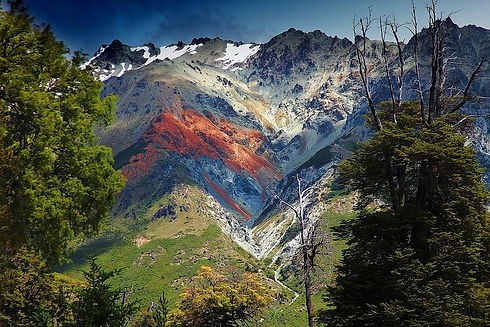Introduction
Argentina is located below Brazil and stretches down the continent. It is remarked for its unique terrain and wonderful tourist attractions. Argentina has one of the largest populations in South America. Residents are known for having a huge passion for international football. Argentina's football team is regarded as one of the most successful teams in the history of the sport. If you want to find out more about Argentina check out the tabs above & below.

History & Demographics
Argentina has a long history and diverse demographics. Starting with many pre-existing indigenous groups such as the Diaguita, Mapuche, Guaraní, and Tehuelche, which were located in what is now Argentina. Argentina's indigenous population was much smaller than neighboring countries, due to the unique terrain of Patagonia. In 1516 the first European to set foot in Argentina was Juan Díaz de Solís. He explored the land, had peaceful interactions with indigenous people, and claimed the land as Spanish territory. Many years later, the Spanish established a permanent settlement in what is now Buenos Aires in 1580. The Spanish controlled rule of Argentina until 1776 when Spain established the viceroyalty of Rio de la Plata, which included Argentina. In 1810 tensions grew with the criollos (Spanish born in the Americas) and peninsulares (Spanish born in Spain). The Criollos attacked the Peninsulares and ended up overthrowing Spanish rule. The Criollos group in Buenos Aires formed a local government called Primera Junta. For the next 6 years, Criollos and Argentine-born fought for their independence against the Spanish. Argentina was able to become independent from Spain in July of 1816. Marking the beginning of Argentina's independence, Argentina was able to grow during these years and had a large migration wave from the 1850s to the 1950s, bringing millions of Europeans to Argentina. In 1943, a secret coup was orchestrated by a military group in which they successfully overthrew the leader of Argentina, Ramón Castillo, which ended a decade of corruption under his leadership in Argentina. A small island off the coast of Argentina is called the Falklands. Sparked a war between Argentina and the United Kingdom in 1982. After 72 days and over 900 casualties, the United Kingdom won the battle and retained ownership of the territory. This marked the last war Argentina had ever fought. In December of 2001, Argentina experienced a major economic crisis. The government implemented “corralito” which restricted access to people's bank accounts, leading to massive bank runs and a default on public deb,t which also sparked many protests and riots throughout major cities in the country. This marked one of Argentina's worst events in the 21st century. Argentina's demographic is diverse compared to neighboring countries. The largest ethnic group in Argentina consists of people of European descent, mainly from Spain and Italy, but also from Germany, France, Poland, and other European nations. Argentina also contains a large population of European and indigenous descent, who are referred to as Mestizos. Many mestizos are found in northwestern Argentina, where indigenous heritage is strongest. Argentina also has a significant African, Arab, Asian, and the largest Jewish population in Latin America. Argentina's ethnic diversity is a result of its past. Indigenous groups first lived in the territory of Argentina. The Spanish colonization brought European settlers to Argentina. Enslaved Africans also arrived due to the European colonization of the world. From the 1800s to the 1900s, there were major migration waves of millions of Europeans moving to Argentina. This time also sparked the migration of Middle Easterns and Asians to Argentina. All these diverse demographics of Argentina have shaped how the country is today.
May Revolution


Argentina Economic Crisis 2001

British Troops (Falkland War 1982)

Andes Mountains

Patagonia

Buenos Aires

Andes Region

Igauza Falls

